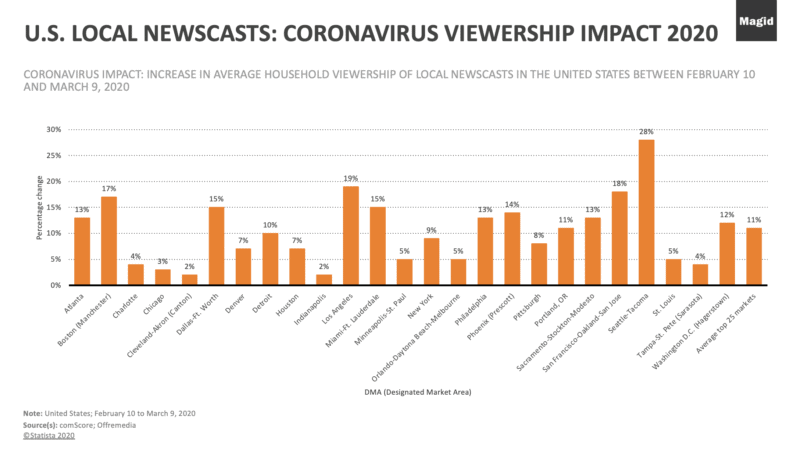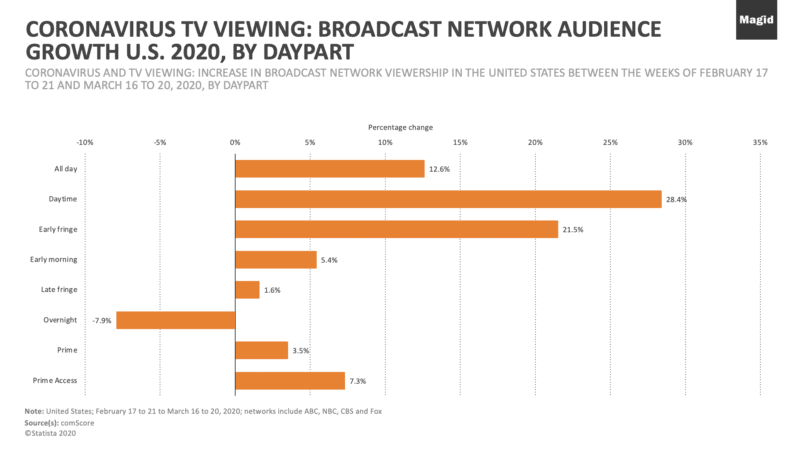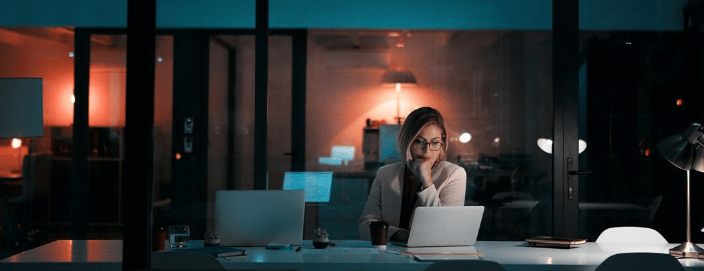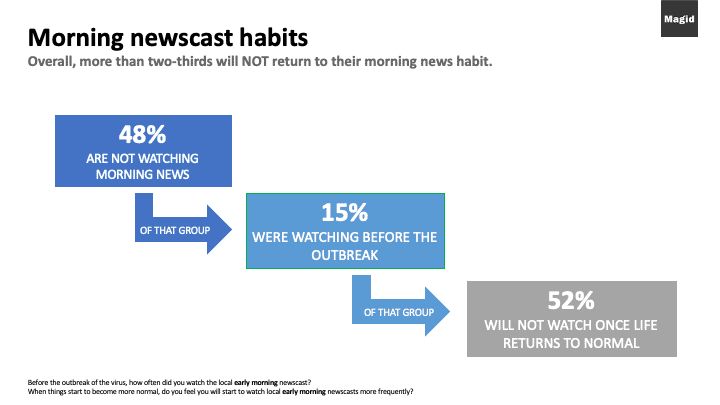The “crisitunity” of COVID-19: finding resilience in a disrupted local media landscape
The local media landscape certainly looks different than this time last year, to put it mildly. No media organization has been immune to the impact of COVID-19, in ways both good and bad – we’ve seen revenues decrease and viewing dramatically increase (especially in the early months of the pandemic).
Throughout this crisis, we’ve also seen a significant shift in audience patterns.

At Magid, we’ve studied this evolution firsthand in our remote work study, analyzing the industry as the pandemic forced broadcasters in every market to abruptly change workflow overnight. And we believe the coronavirus outbreak will define the consumption habits of consumers and the perception of news brands for years to come. It’s not about waiting for a vaccine and then everything will go back to normal – there’s no going back. So what does that mean for your organization and its future?
I would argue this crisis has revealed opportunity for media organizations to redefine themselves – making this time a crucial “crisitunity” for the industry.
Lead through the disruption
In the middle of so much uncertainty, organizations may be fearful of creating more ambiguity by changing workflows, programs, or even priorities. But that’s what they must do to get through this crisis and come out on the other side stronger. The most successful organizations – the ones who won’t just survive but thrive — will see this disruption as an opportunity to reorient their business for the future. And that will mean dramatic, perhaps drastic, changes.
Dramatic changes don’t always mean cuts. While there’s no doubt media companies will face those tough decisions, you cannot cut your way to success. As an organization, you need to analyze: what are the things your company is doing right now that are superfluous or fringe, not core to your brand or delivering on the audiences’ new needs? Where is there duplication in effort or output? What about real estate? What can be automated because it’s not adding true audience value? Those are places where news organizations need to focus on, pull back and invest in where the audiences have gone.
New content and redesigned programming
I always say, live deeply in your audience’s brain. What do they need, and perhaps more importantly, when? Mornings for most families will never be the same – fewer people will commute, fewer people will be in cars and parents will deal with new worries when it comes to sending their kids off to school. Even when (if?) consumers’ morning routine more closely resembles life pre-COVID, our research shows that most will not return to their old morning news habit.
What used to be essential information no longer is, and what never used to be a worry, is now. So how does that affect your morning offer? The information audiences need to prepare for the day has shifted. Has your programming?
Our research shows that viewing habits shifted from the morning to evening, particularly extended by the use of streaming platforms. This presents an opportunity in how we deliver information to our audiences. Consider: what devices and platforms are they using more now versus at the start of 2020?
We were all ill-prepared to face a crisis of this magnitude. But let’s use this time to redefine our brands, and ultimately, our industry. We’ve now been forced to confront changes in consumer behavior and content consumption that had been on the horizon for a long time, but whose arrival has been harried by COVID. Let’s embrace the disruption, see it for the opportunity it is, and take advantage of what’s in front of us. The future of the industry depends on it.



